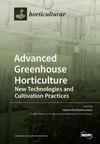Combined Metabolomic and Transcriptomic Analysis Reveals Candidate Genes for Anthocyanin Accumulation in Ginkgo biloba Seed Exocarp
IF 3.1
3区 农林科学
Q1 HORTICULTURE
引用次数: 0
Abstract
Anthocyanin is an important pigment that affects plant color change. In this study, the color parameters and anthocyanin content of Ginkgo biloba seed exocarp at different periods were measured, and it was determined that the a* value (redness value) of the seed exocarp was closely related to the color change occurring during the development of the seed exocarp, and the anthocyanin content in the seed exocarp showed an increasing trend. The molecular mechanism of anthocyanin biosynthesis in Ginkgo biloba seed exocarp is still unclear. In order to further understand the molecular mechanism of color change in Ginkgo biloba seed exocarp, the regulation mechanism and accumulation mode of anthocyanin in the seed exocarp at three different periods were analyzed using transcriptomic and metabolomic. A total of four key anthocyanins were screened from the metabolome, including three kinds of Cyanidin 3-arabinoside, Malvidin 3-glucoside and Cyanidin 3-sambubioside 5-glucoside with increased content. Among them, Cyanidin 3-arabinosidehad a strong correlation with the a* value (PCC = 0.914), which have a great influence on the color change of the seed exocarp, and Delphinidin 3-O-3″,6″-O-dimalonylglucoside with decreased content might jointly affect the formation of exocarp color. The transcriptome data show that among the structural genes, ANS (Gb_33402) had the highest correlation with Cyanidin 3-arabinoside (PCC = 0.9217) and in GbANS, only Gb_33402 showed an upregulated expression trend in the three stages of seed exocarp development, which suggesting that it plays an important role in anthocyanin accumulation in the seed exocarp and it may be the key structural gene affecting the formation of seed exocarp color. Among the transcription factors, the differential expression of most transcription factors (MYB, bHLH, b-ZIP, NAC, WDR and AP2/ERF) may jointly affect the formation of seed exocarp color by promoting anthocyanin accumulation. This study elucidates the main anthocyanins that cause the color change of the seed exocarp of Ginkgo biloba and reveals the molecular regulation mechanism of anthocyanins at different developmental stages of the seed exocarp. It provides a theoretical basis and insights for understanding the color change of Ginkgo biloba seed exocarp.代谢组学和转录组学联合分析揭示银杏种子外果皮花青素积累的候选基因
花青素是影响植物颜色变化的重要色素。本研究测定了不同时期银杏种子外果皮的颜色参数和花青素含量,结果表明种子外果皮的a*值(红度值)与种子外果皮发育过程中的颜色变化密切相关,种子外果皮中的花青素含量呈上升趋势。银杏外果皮花青素生物合成的分子机制尚不清楚。为了进一步了解银杏种子外果皮颜色变化的分子机制,利用转录组学和代谢组学分析了三个不同时期银杏种子外果皮中花青素的调控机制和积累模式。从代谢组中共筛选出4种关键花青素,包括含量增加的3-阿拉伯糖苷型花青素、3-葡萄糖苷型花青素和5-葡萄糖苷型花青素。其中,矢车菊素 3-阿拉伯糖苷与 a* 值(PCC = 0.914)有很强的相关性,对种子外果皮颜色的变化有很大的影响,而含量减少的 Delphinidin 3-O-3″,6″-O-dimalonylglucoside 可能会共同影响外果皮颜色的形成。转录组数据显示,在结构基因中,ANS(Gb_33402)与花青素 3-阿拉伯糖苷的相关性最高(PCC = 0.9217),在 GbANS 中,只有 Gb_33402 在种子外果皮发育的三个阶段中均呈表达上调趋势,表明它在种子外果皮花青素积累中起着重要作用,可能是影响种子外果皮颜色形成的关键结构基因。在转录因子中,大多数转录因子(MYB、bHLH、b-ZIP、NAC、WDR 和 AP2/ERF)的差异表达可能通过促进花青素积累而共同影响种子外果皮颜色的形成。本研究阐明了引起银杏种子外果皮颜色变化的主要花青素,并揭示了花青素在种子外果皮不同发育阶段的分子调控机制。该研究为理解银杏种子外果皮颜色变化提供了理论依据和启示。
本文章由计算机程序翻译,如有差异,请以英文原文为准。
求助全文
约1分钟内获得全文
求助全文

 求助内容:
求助内容: 应助结果提醒方式:
应助结果提醒方式:


